Insight
HDB BTO Unit Selection empowered by XR
Role
Team lead, Designer, Developer
Duration
5 weeks for the Build Hackathon (Feb-Mar 2025)
Responsibilities
- Led end-to-end design process
- Conducted user research
- Developed the Unity prototype alongside my engineering teammate
The Problem
After successfully balloting for a BTO project, prospective homeowners face several challenges when selecting their ideal unit:
- Difficulty visualizing space: Applicants rely on 2D floor plans, which make it hard to understand the actual size and layout in 3D.
- Generic showroom layouts: Showrooms only represent standard 3, 4, and 5-room flats, which don't reflect the unique layouts of different BTO projects.
- Fragmented information: Factors like sunlight direction and proximity to amenities must be gathered from multiple online sources, making it difficult to assess suitability. Not to mention things like sunlight direction specifically is hard to visualise.
Our goal was to design an immersive XR experience that empowers homeowners to make more informed decisions before committing to their future home.
Project Highlights
4 concept tests and 4 usability tests with real BTO applicants
Creating engagement beyond the hackathon
To design and develop the XR prototype
Research & Discovery
To validate our idea early, we built an interactive concept prototype in ShapesXR—an AR/VR design tool—and tested it with 4 recent BTO applicants. The session was divided into two parts:
- Exploratory user interviews to uncover key challenges in the unit selection process.
- Concept testing with the ShapesXR prototype to assess its effectiveness.
Key Takeaways
- Participants found it difficult to understand and visualize unit layouts using 2D plans, particularly in terms of overall spatial arrangement and actual size.
- Selecting an ideal unit involved multiple considerations such as unit position, nearby amenities, floor level, and sunlight exposure.
- The concept prototype was well-received, with users appreciating features like project specific unit layouts, sunlight simulation, and real-world views from windows.
- Areas for improvement included more realistic textures, an option to view spaces without furniture, and other refinements to enhance clarity and usability.
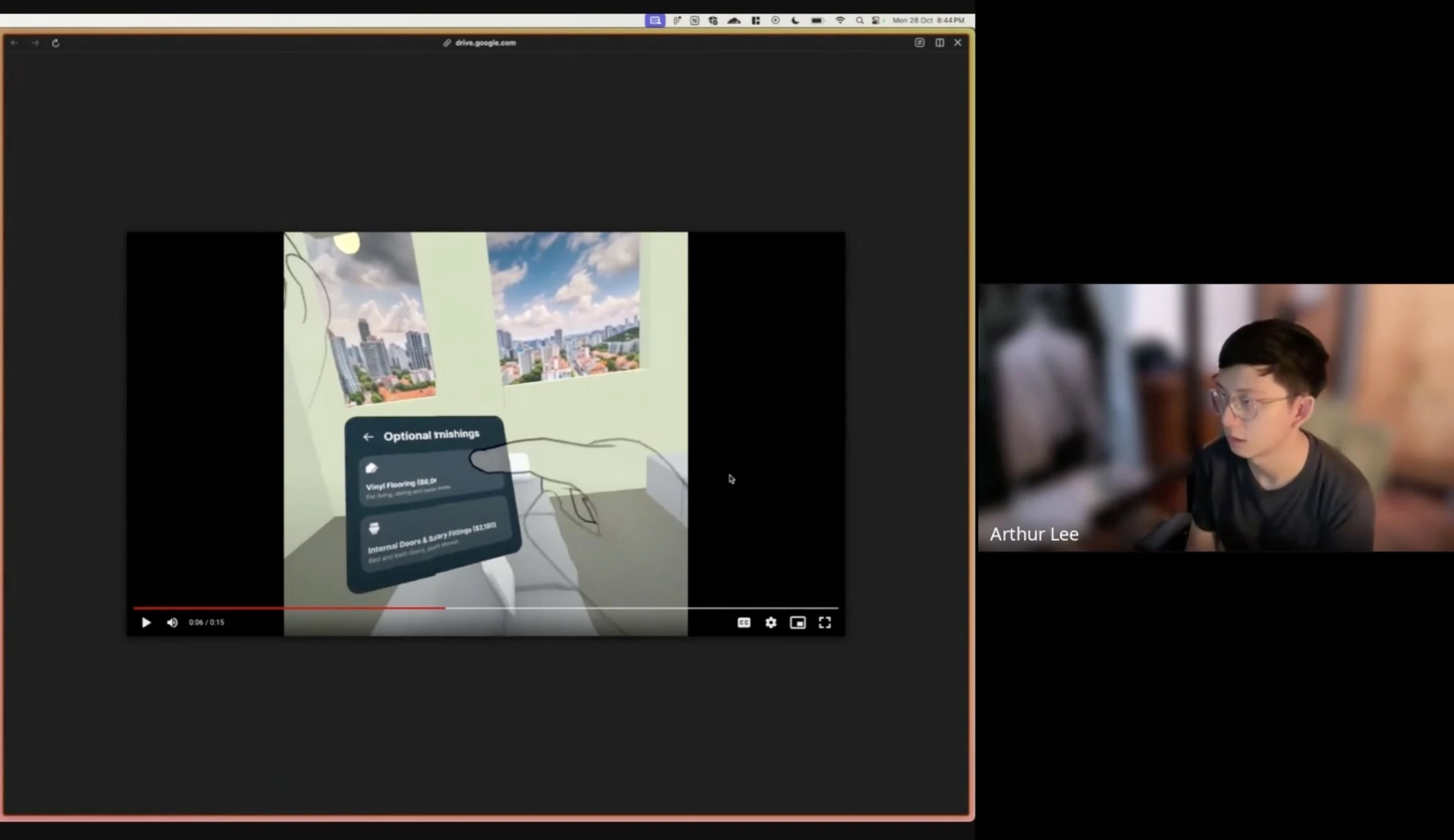
Early concept testing with ShapesXR prototype
Taking a moment
Before diving into our final solution, let's take a moment to appreciate how the prototype evolved. What began as a rough concept in ShapesXR transformed into a fully functional XR experience through multiple iterations and user feedback cycles.
The Final Solution
Our XR prototype enables prospective homeowners to:
- Explore the estate from a bird's-eye view
- See unit availability and step inside life-size 3D models
- Visualize sunlight changes throughout the day and year
- Experience surrounding amenities within an immersive environment
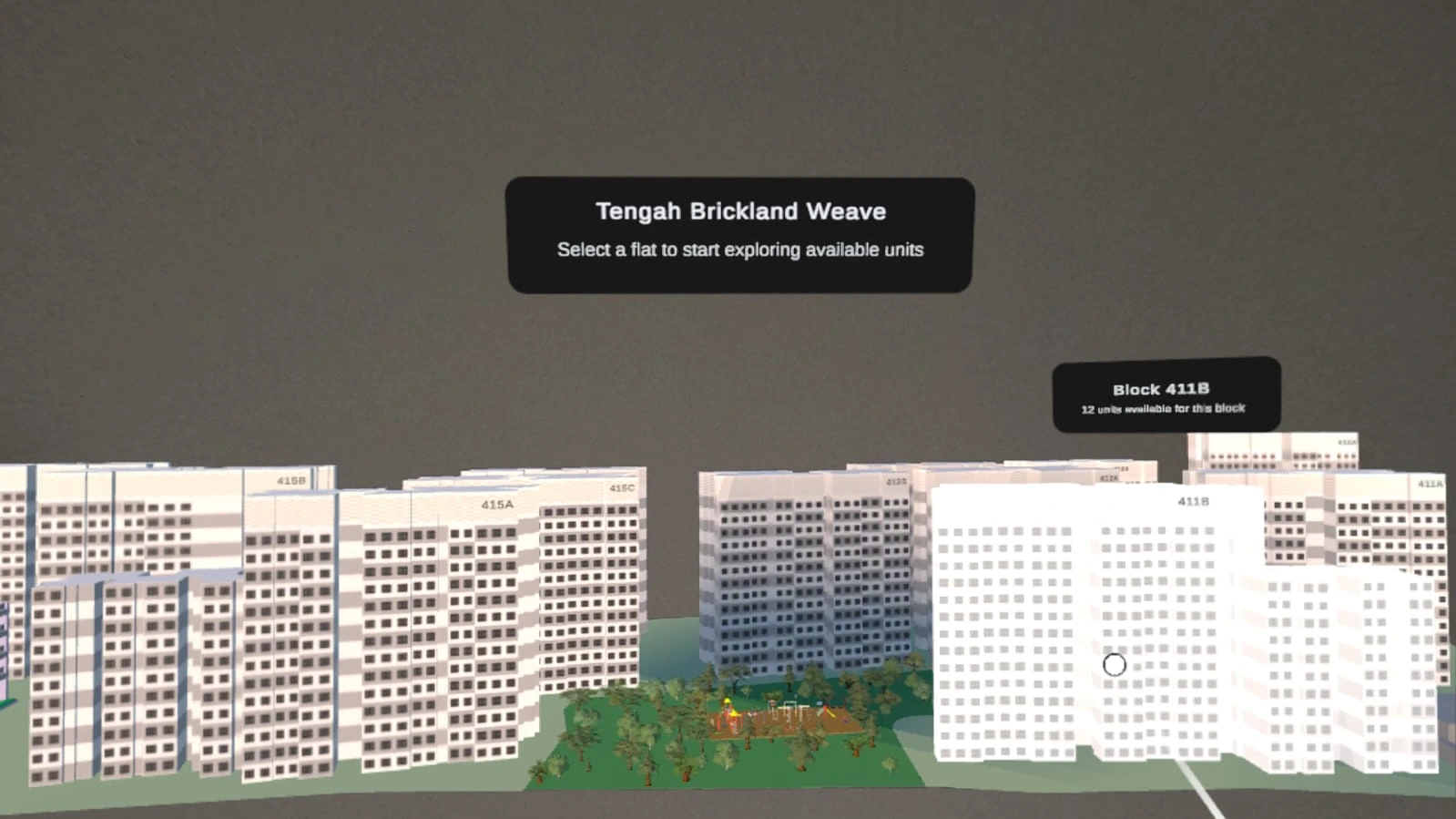
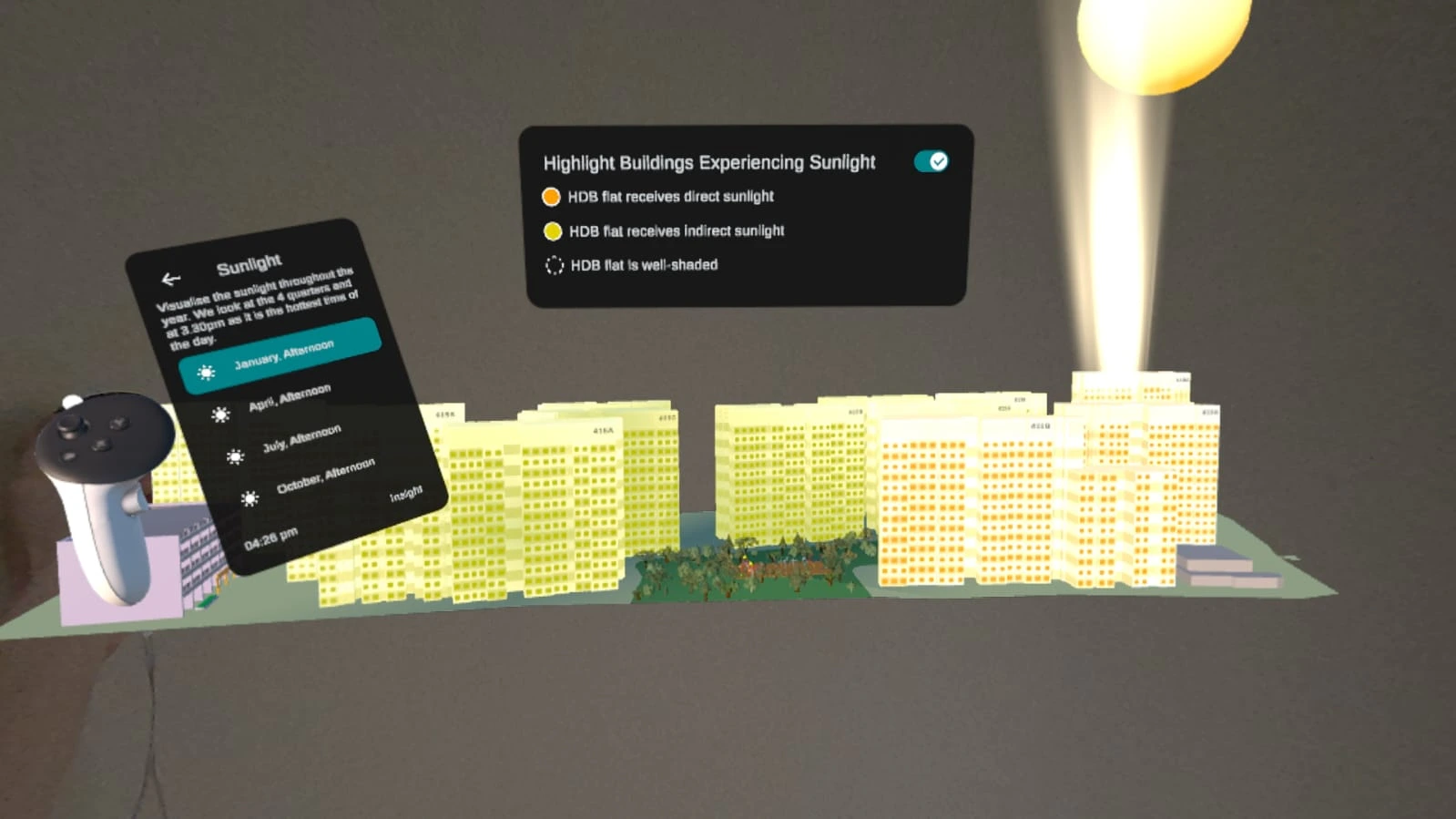
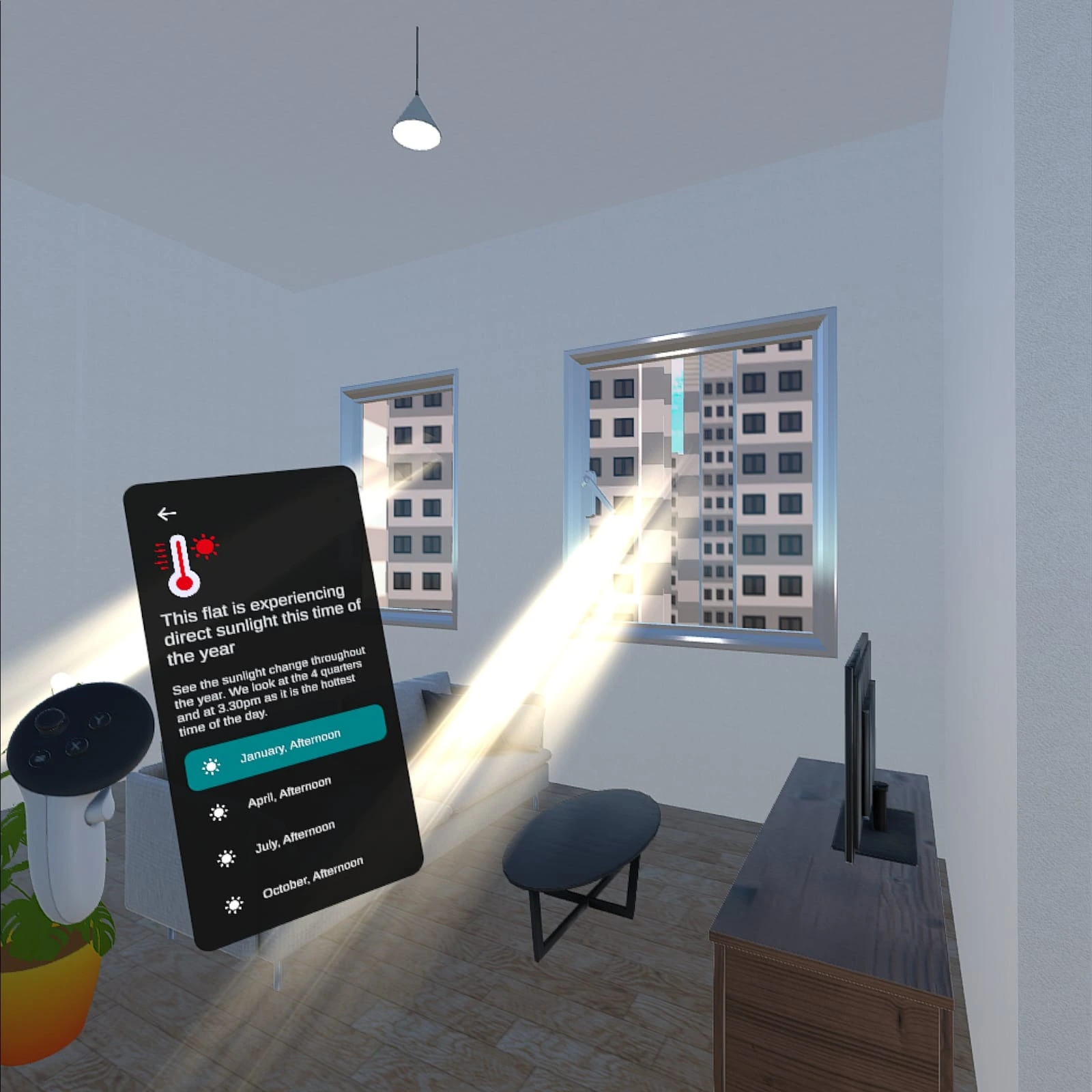
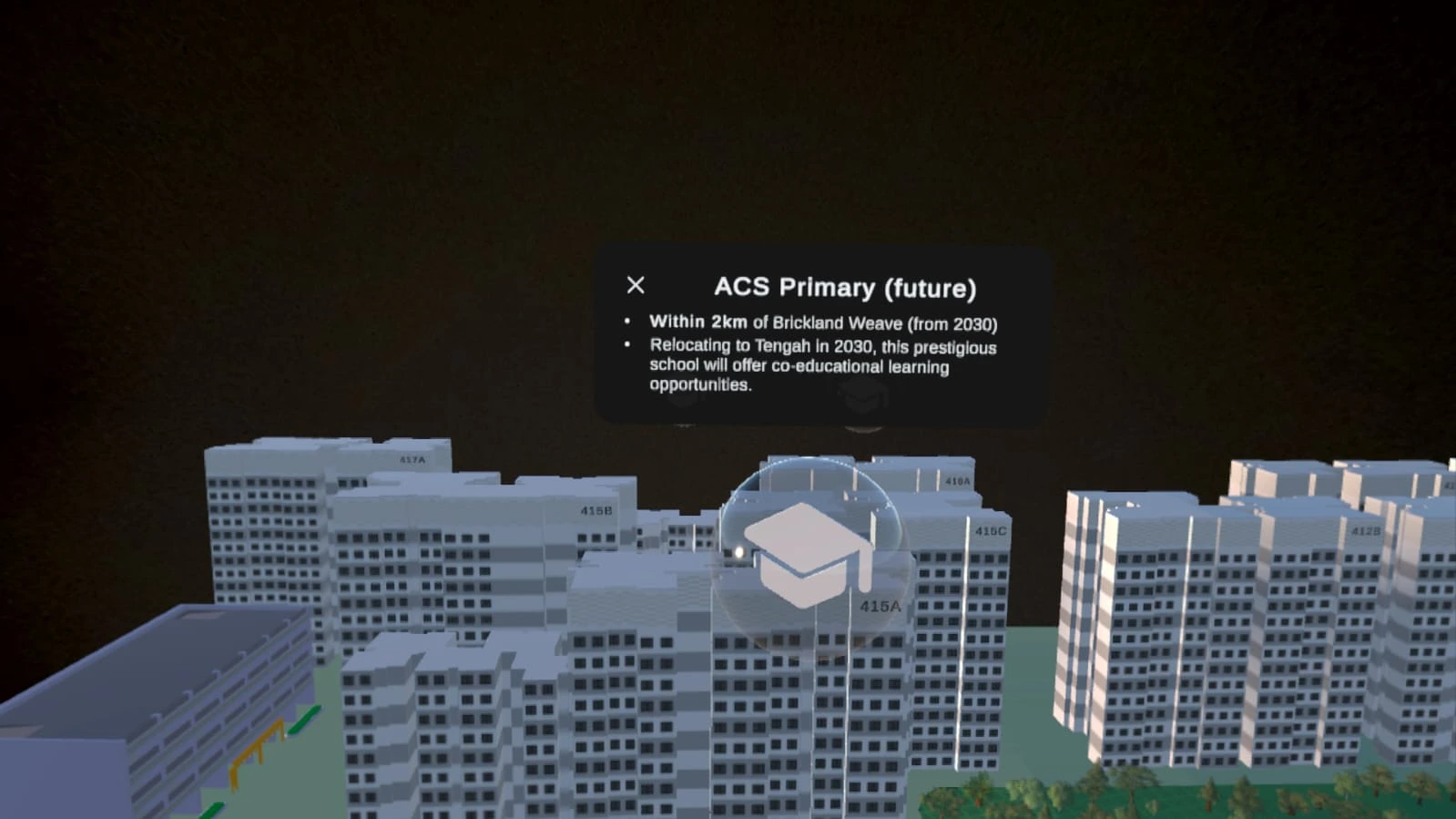
Potential Impact
By integrating XR into the BTO unit selection process, this solution has the potential to:
- Reduce uncertainty for homebuyers by providing a realistic preview of their future home
- Streamline decision-making, minimizing the need for site visits
- Enhance transparency in the selection process by consolidating relevant information in one immersive experience
Retrospective & Learnings
Setting the Right Expectations
Initially, our goal was to showcase XR's potential as a platform, but midway through, we shifted toward a competitive mindset, leading to disappointment when we didn't win.
If winning was the goal, we would have needed to optimize for real-world adoption by prioritizing a mobile/desktop-first approach with XR as an optional enhancement.
User Testing for Headset-Based XR
In-person testing was crucial: Since headset-based XR experiences are inherently physical, remote testing was feasible for concept validation but less effective for usability testing.
Guided onboarding matters: Many participants were new to AR/VR, so onboarding needed to teach both app-specific interactions and basic headset functionality to ensure a smooth experience.
Final thoughts
This project was an exciting challenge that demonstrated how XR can transform decision-making in real estate. It also reinforced the importance of iterative design, usability testing, and balancing technological ambition with user needs.
While we didn't win the hackathon, the experience and knowledge gained were invaluable, and the positive feedback from users validated our approach to solving a real-world problem.